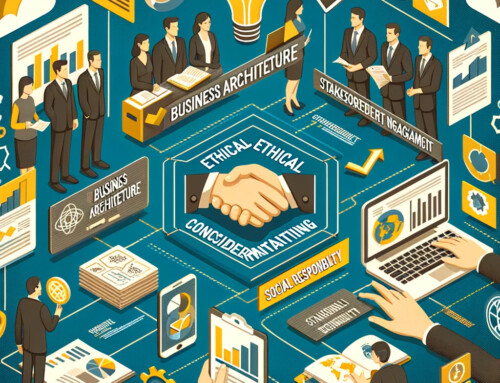
Top Interview Questions and Answers for Enterprise Architect Position
Below are the questions that interviewers may ask an enterprise architect job candidate and the rationale for each question. Please scroll down to see the Top Interview Questions and Answers for Enterprise Architect Position.
Top Interview Questions and Why Ask Them?
- Can you describe your experience with enterprise architecture frameworks? The interviewer will be interested in understanding your familiarity with common frameworks like The Open Group Architecture Framework (TOGAF), the Zachman Framework for Enterprise Architecture, or the Federal Enterprise Architecture (FEA).
- How have you incorporated business strategy into enterprise architecture? This question allows the interviewer to understand how you view the role of an enterprise architect in the context of a company’s broader goals and objectives.
- How have you communicated architectural decisions and their impacts to non-technical stakeholders? As an enterprise architect, you will often need to explain complex, technical information to individuals who may not have a technical background.
- Can you provide an example of a project where you needed to balance different architectural considerations? This question assesses your ability to balance and manage trade-offs between various architectural elements like performance, scalability, cost, and security.
- Can you describe a time when you had to adapt your architectural plans due to changing project requirements or constraints? Change is inevitable in any project; an interviewer will want to see that you can adapt your plans as necessary.
- How have you used technology trends or innovations to improve enterprise architecture? Technology is continually evolving, and enterprise architects need to stay abreast of new developments and consider how they can be utilized for the benefit of the enterprise.
- How do you ensure the enterprise architecture aligns with regulatory and compliance requirements? Compliance is critical to enterprise architecture, especially in regulated industries such as finance or healthcare.
- Can you describe your experience with cloud-based solutions and how they impact enterprise architecture? Cloud technology has become a fundamental part of enterprise architecture, and the interviewer will want to understand your knowledge and experience with it.
- How have you managed risks or addressed security concerns in your architectural designs? Security is a significant concern for most businesses today, and any enterprise architect will need to demonstrate how they have addressed these issues in their work.
- Can you provide an example of how you used metrics or KPIs to assess the effectiveness of your enterprise architecture? This question lets the interviewer understand how you measure success and improve the enterprise architecture over time.
Top Interview Questions and Answers for Enterprise Architect Position
- Can you describe your experience with enterprise architecture frameworks?
-
- Certainly. I have extensive experience using the TOGAF framework in my previous roles. I was actively involved in defining the business, application, data, and technology architectures for various projects. In one project, I leveraged my knowledge of the TOGAF ADM cycle to move from the preliminary phase to implementation governance, ensuring alignment with business goals throughout. My experience with enterprise architecture frameworks has proven vital in guiding my approach to designing, planning, implementing, and governing enterprise information architecture.
- How have you incorporated business strategy into enterprise architecture?
-
- I strongly believe enterprise architecture is a tool to implement and drive business strategy. In one of my previous roles, our organization had a strategy to become more data-driven. Using this strategic direction, I worked on a project that involved rearchitecting our data infrastructure. We transitioned to a modern data architecture with a data lake, enabling a more robust data analytics and decision-making platform. It helped the organization move towards a more data-driven approach, aligning with the overall business strategy.
- How have you communicated architectural decisions and their impacts to non-technical stakeholders?
-
- I understand that the complexity of architectural decisions can often be overwhelming for non-technical stakeholders. So, I always strive to present information in a simplified and clear manner. For instance, during the implementation of the aforementioned data lake project, I created diagrams to visually illustrate the changes we were making and how data would flow in the new architecture. I also broke down the benefits of these changes into tangible points, such as improved data quality, faster data processing times, and more insightful analytics. This helped non-technical stakeholders understand the value and impact of the changes.
- Can you provide an example of a project where you needed to balance different architectural considerations?
-
- Absolutely, in every project, there are multiple factors to consider. For instance, we had to design a new online transaction processing system in one project. We needed to balance factors such as system performance, scalability, cost, data integrity, and security. It was a challenge, as increasing performance could potentially increase cost while improving security might impact system performance. By thoroughly analyzing the requirements, setting clear priorities, and leveraging modern technologies and methodologies, we were able to build a solution that achieved a satisfactory balance across all these considerations.
- Can you describe a time when you had to adapt your architectural plans due to changing project requirements or constraints?
-
- Yes, that’s quite common in the enterprise architecture space. For one project, we had initially planned for an on-premise implementation of a data warehouse. However, mid-way through the project, we had to pivot our strategy and adapt our architectural plans to implement a cloud-based data warehouse instead due to changing financial constraints and organizational shift towards the cloud. We updated our design, conducted a fresh round of impact analysis, and worked with vendors to ensure a smooth transition. It was challenging, but the experience underscored the importance of flexibility and adaptability in the role of an enterprise architect.
- How have you used technology trends or innovations to improve enterprise architecture?
-
- In my previous role, I led the adoption of microservices architecture as part of our digital transformation initiative. The rise of containerization technologies like Docker and orchestration platforms like Kubernetes made it feasible to transition from monolithic to microservices architecture. This new architectural design improved scalability, made our system more robust against failures, and allowed different teams to work independently on separate services.
- How do you ensure the enterprise architecture aligns with regulatory and compliance requirements?
-
- It’s crucial to include compliance requirements early in the architectural design phase. For instance, while working in the healthcare sector, I ensured our architecture aligned with Health Insurance Portability and Accountability Act (HIPAA) regulations. This meant incorporating specific data protection mechanisms, ensuring encryption at rest and in transit, and including the ability for comprehensive auditing. By building these requirements into the architecture from the beginning, we could meet and demonstrate compliance more effectively.
- Can you describe your experience with cloud-based solutions and how they impact enterprise architecture?
-
- I have extensive experience in migrating legacy systems to cloud-based solutions. In my previous role, I led migrating our on-premise applications to AWS. The move to the cloud impacted our enterprise architecture significantly. It introduced a new level of scalability and flexibility that wasn’t available in the traditional setup. Also, it led us to adopt a more service-oriented architecture, using various managed services offered by AWS, which increased our operational efficiency and reduced maintenance overheads.
- How have you managed risks or addressed security concerns in your architectural designs?
-
- I believe that security should be a core consideration from the earliest stages of architectural design. In a project where we were designing a customer-facing application, I ensured that we used secure design principles, such as least privilege, defense in depth, and encryption for sensitive data. We incorporated regular security assessments and penetration testing as part of the development cycle to identify and mitigate potential security risks.
- Can you provide an example of how you used metrics or KPIs to assess the effectiveness of your enterprise architecture?
-
- Certainly. When we migrated to the cloud in my previous role, I set up several metrics to measure the success of our new architecture. These included infrastructure costs, system availability, application response times, the time taken to release new features, and the number of security incidents. By tracking these KPIs, we could quantitatively assess the effectiveness of our new architecture and make data-driven decisions for further improvements. We found that our cloud-based architecture significantly improved scalability and availability while reducing costs.


